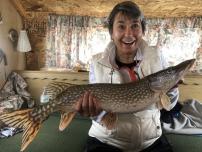
Photo © Wirestock | Dreamstime.com
We’re heading into thoroughbred racing’s Triple Crown season (or the season for the pursuit of the Triple Crown, at least). And while much is at stake, including stud fees, betting dollars and (at Pimlico Racetrack), the painting of the weather vane to match the colors of the winning horse and jockey, the iconic symbols remain the flowers: the blankets of red roses, Black-Eyed Susans and white carnations that wait in the winner’s circle.
In fact, the flowers have taken on a life of their own, commercially. The official drink of the Preakness is the Black-Eyed Susan. The nickname of the Kentucky Derby is the Run for the Roses (hey, even Dan Fogelberg sang about it). And according to Sports Illustrated, the White Carnation was the official drink of Belmont Stakes until 1997.

And like the drinks that bear their names, the actual flower blankets that are draped over horses’ necks are specifically crafted and have surprising origins.
The Kentucky Derby’s roses, for example, aren’t grown in Kentucky. (Sorry, y’all.) They come from a Rainforest Alliance Certified grower in Bogota, Colombia, according to Kroger, whose florists work on the wreath.
Roses are imported to the bluegrass state and the day prior to the race, master designers begin crafting the blanket, also known as a garland, which uses 554 roses, at the Middletown Kroger store. (Fun fact: The entire 10- to 12-hour process is open to the public and in last year, 6,000 people showed up to watch the all-night event.)
The middle jewel of the Triple Crown is the Preakness Stakes, where the winner wears a blanket of Black-Eyed Susans.
Well, to be honest, they actually don’t. Susies, as they are colloquially known, may be the state flower, but they don’t bloom in Maryland until July or August. What hangs around the neck of the horse, therefore, is actually a flower called the Viking Pom or Viking Mum. It’s fairly close in size and coloration but the center is more brown than black. That means florists are charged with dabbing the center of every single one of the thousands of flowers in the 18” x 90” blanket with black lacquer to recreate the appearance of a Black-Eyed Susan.
Another trivia point: Viking Poms are a bit showier, since they have a thick multi-layered fringe of petals, whereas Susies have a single circle of 13 petals. The blanket is assembled at Giant Foods (Maryland’s answer to Kroger).
By the way, Maryland is the only state whose state flower makes an appearance (or sort of makes an appearance, given the cold, hard truth of the wreath) at the Triple Crown. The official state flower of Kentucky is the giant goldenrod. Ironically, the official flower of New York, home of the Belmont, is the rose.

Speaking of which. The Belmont Stakes’ winning wreath is made up of 700 white carnations, which aren’t grown in New York, by the way; like the roses for the Derby, they come from Colombia, according to Wikipedia. The New York Racing Association works with The Pennock Company, a wholesale florist based in Philadelphia to import the carnations used for the race.
But don’t let the reality take the bloom off the races for you. The fun fact is that Triple Crown season is here, and it will still be a time for watch parties, wild hats and wagering. In fact, according to WalletHub, the betting windows will see plenty of action.
The largest amount won at the Kentucky Derby was $1.2 million by a woman who, in 2018, placed an $18 bet on a series of races. The biggest losing bet? $2.6 million. But no matter who winds up wearing the roses, the host region is the biggest winner, gaining an economic impact of more than $400 million.

